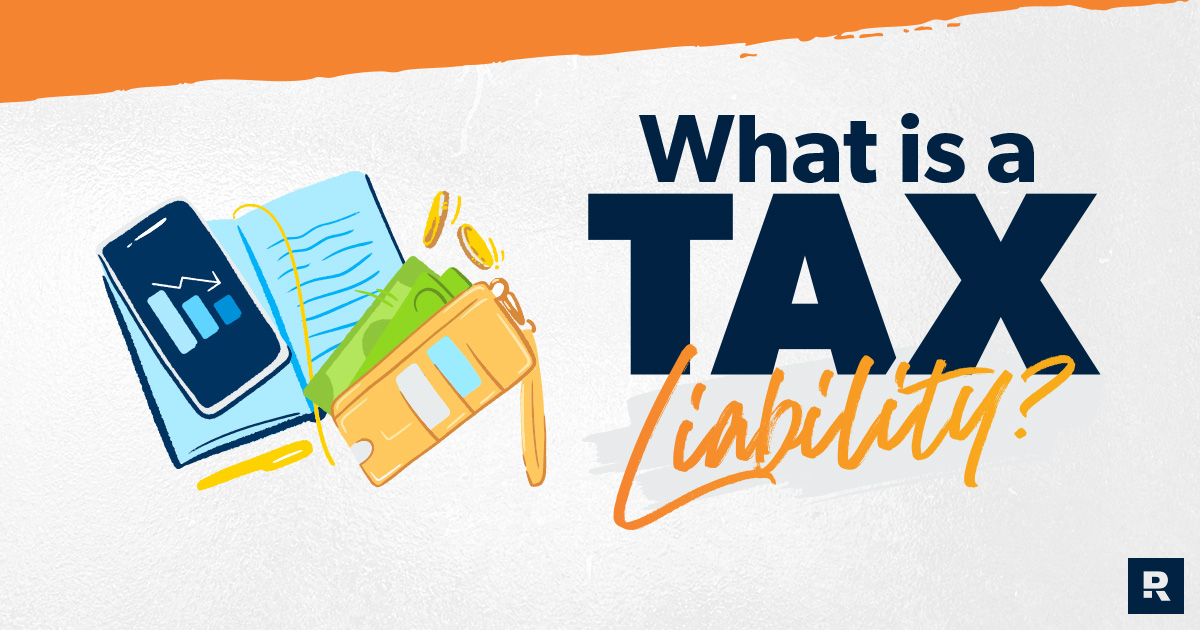
Hey, we’re not going to geek out on accounting terminology, but to understand tax liability, it’s helpful to be familiar with two basic accounting terms: assets and liabilities. Assets are things you own—think money, property, your collection of obsolete cell phones. Liabilities are money you owe to other people. In other words: Bills you need to pay.
So what is a tax liability?
A tax liability is a tax bill you owe to a state, local or federal government entity. But usually when people talk about tax liability, they’re referring to the big one: federal taxes.
What Is a Total Tax Liability?
Your total tax liability is the combined amount of taxes you owe the IRS from income tax, capital gains tax, self-employment tax, and any penalties or interest. This also includes any past-due taxes that you haven’t paid from previous years.
Why It’s Important to Know Your Tax Liability
Your first day of work at a new job is usually a blur of new names and faces, but at some point you probably filled out a W-4 form. This form determines how much money your employer withholds from your paycheck to send to the IRS to cover your tax liability.
If you’re wondering how much you pay in taxes, take a look at your pay stub. (It’s that slip of paper you toss in the trash before cashing your check . . . or that form you ignore in your online payroll system.) Seriously, though, it’s a good idea to look at your pay stubs from time to time just to make sure your withholdings are okay.
When tax season hits, if your paycheck withholdings are less than your total tax liability, you’ll have to cut Uncle Sam a check for the difference. Boo! If your withholdings are higher than your total tax liability, then you’ll get a refund. Yay! Well, don’t do a tax refund happy dance just yet.
At the end of the year, you really don’t want to pay extra taxes or get a big refund. A refund means you overpaid Uncle Sam for a whole year. Wouldn’t you rather keep that extra money in your pocket?
And this is why knowing your tax liability is important. If you adjust your tax withholdings to match your total tax liability, you can get your refund as close to zero as possible. Changing your withholdings could feel like getting a raise!
If you had to pay the IRS at the end of the year or got a big refund, talk to your employer about adjusting your W-4. You want to make sure you have just enough taxes taken out of your paycheck to keep Uncle Sam happy.
If you’re self-employed or own a small business, things are a little more complicated. You’ll have to estimate your tax liability and make quarterly tax payments throughout the year. But the goal is the same: Don’t overpay or underpay the IRS.
Examples of Income Tax Liability
Any time there is a taxable event—think earning income or selling something—you rack up tax liabilities. The most common type of tax liability is earned income. Your taxable income gets divided into income ranges—or brackets—with each range getting taxed at a certain rate.
Warning: These brackets aren’t nearly as fun as March Madness brackets. Here are the federal income tax rates and brackets for the 2023 tax year.
|
Tax Rate |
Single Filer |
Married, Filing Jointly |
Married, Filing Separately |
Head of Household |
|
10% |
$0–11,000 |
$0–22,000 |
$0–11,000 |
$0–15,700 |
|
12% |
$11,000–44,725 |
$22,000–89,450 |
$11,000–44,725 |
$15,700–59,850 |
|
22% |
$44,725–95,375 |
$89,450–190,750 |
$44,725–95,375 |
$59,850–95,350 |
|
24% |
$95,375–182,100 |
$190,750–364,200 |
$95,375–182,100 |
$95,350–182,100 |
|
32% |
$182,100–231,250 |
$364,200–462,500 |
$182,100–231,250 |
$182,100–231,250 |
|
35% |
$231,250–578,125 |
$462,500–693,750 |
$231,250–346,875 |
$231,250–578,100 |
|
37% |
Over $578,125 |
Over $693,750 |
Over $346,875 |
Over $578,1001 |
So, let’s say you earn $60,000 in gross income in a year and you’re a single filer. If you take the standard deduction of $13,850, that leaves you with $46,150 in taxable income—putting you in the 22% tax bracket. What? That’s going to be like 10 grand in taxes! Well, not quite.
Don’t settle for tax software with hidden fees or agendas. Use one that’s on your side—Ramsey SmartTax.
The good news is that whatever bracket you find yourself in, you don’t have to pay that percentage on your entire income—just the portion that lands in that range. The rest of your income is taxed at the lower rates for each bracket that your income fills up.
So, your first $11,000 is taxed at 10% ($1,100 in taxes). The second portion of your taxable income—anything between $11,000 and $44,725—is taxed at 12% ($4,047 in taxes). Anything over $44,725 is taxed at 22% ($313.50 in taxes). For a grand total of (drumroll please) $5,460.50!
Let’s take a look at the math . . . or just skip to the next paragraph if math isn’t your thing.
Total Taxes on $46,150 of Taxable Income
|
Tax Bracket |
Taxes Owed |
|
10% Tax Bracket: $0–11,000 $1,100 x .10 = $1,100 |
$1,100 |
|
12% Tax Bracket: $11,000–44,725 $44,725 - $11,000 = $33,725 $33,725 x .12 = $4,047 |
$4,047 |
|
22% Tax Bracket: $44,725–95,375 $46,150 - 44,725 = $1,425 $1,425 x .22 = $313.50 |
$313.50 |
|
Total Taxes Due |
$5,460.50 |
This is a pretty basic example, and there are more factors that can affect your total tax liability—like tax credits, exemptions and deductions—and things can start to get hazy. If you feel the room starting to spin, just reach out to a tax pro. They can help you with year-end tax planning and clear up the confusion so you can feel confident that you’re covering all your bases (and paying your taxes on time).
How to Find Your Tax Liability on the 1040 Form
Over the last few years, the IRS has tried to make some changes to the 1040 form in an effort to make it a little bit simpler to fill out.2 But it’s still a government form with a lot going on. All that said, here’s where you can find your tax liability totals this year.
Line 24 shows the total tax you owe for the current year after deductions and credits. But don’t worry—this is the amount you owe before subtracting what you’ve paid throughout the year from withholdings. Phew!
Line 25 is where you’ll fill in how much you’ve already paid in taxes. You can plug in the amounts withheld from W-2s, 1099s and any other forms that show you dished out dough to Uncle Sam.
You can list any other payments you made and additional credits you can claim on lines 26 through 31. Add up lines 25, 26 and 32 to find how much you’ve already paid in taxes and your additional credits—or your total payments. This total goes on line 33.
Now, if your total tax (line 24) minus your total payments (line 33) equals zero, congratulations! You owe nothing and get nothing back. You covered your tax liability throughout the year. If line 33 (your payments and additional credits) is higher than line 24 (total tax owed), you’ll get a refund for the amount you overpaid.
On the other hand, if line 24 is higher than line 33, you’ll fill out line 37 with the difference—the IRS made it easy for you by calling this line amount you owe. (How thoughtful.) This is your remaining tax liability. And if that isn’t bad enough, if that number is above $1,000, you’ll also have to pay a penalty on top of your tax bill. No thanks.
How to Reduce Your Tax Liability
Hello, deductions and credits! One way to reduce your tax liability is to take advantage of any deductions and tax credits you’re eligible for. These babies reduce your taxable income and can put you in a lower tax bracket, meaning less of your income will be taxed.
When it comes to these deductions, you can either take the standard deduction—$13,850 for single filers and $27,700 for married couples for the 2023 tax year—or you can itemize your deductions.3 This includes certain medical expenses, mortgage interest or property taxes, to name a few.
Keep in mind that if your itemized deductions are less than the standard deduction, your best route is to go ahead and take the standard deduction so less of your income gets taxed. After Congress nearly doubled the standard deduction in 2017, most taxpayers get more bang for their buck by taking the standard deduction instead of itemizing.
Tax credits are another way of reducing your total tax liability. These are different from deductions because credits reduce the dollar amount of your total tax bill after the tax percentages have been applied. These are things like the child or dependent tax credits or the adoption credit.
If you’ve finished Baby Steps 1 through 3, you can also cut down your tax liability by contributing to a 401(k) or other pretax retirement savings account. This lowers your taxable income. But keep in mind this isn’t the best option for everyone in the long run. That’s because you’ll have to pay taxes on your savings when you start taking out money at retirement age.
But remember—this is not an excuse to skip to this step if you haven’t already paid off all your debt and saved up a fully funded emergency fund. A few dollars saved on taxes isn’t worth staying tied to all those monthly debt payments. Bottom line: Never invest in something just to get a tax benefit. And talk to a SmartVestor Pro to see which option is right for you.
File Your Taxes With Confidence
While tax season may never be your favorite time of year, you don’t have to do it all on your own. Reach out to a RamseyTrusted tax professional who serves your area to help you sort out your tax situation—tax liabilities and all! Get ready to walk into the next season feeling like a tax boss. Get a tax pro today!
Feel like your taxes are simple enough to do yourself with tax software? Ramsey SmartTax makes it easy to take control of your taxes and file your tax return in a matter of minutes. You won’t be surprised by hidden fees, and you won’t have to make sense of confusing tax jargon—what you see is what you get!
Federal Classic Includes:
-
All major income types and federal forms
-
Prepare, print and e-file
-
Phone and email support
-
1 year of audit assistance
Federal Premium Includes:
Everything in Classic plus:
-
Live chat
-
Priority phone and email help
-
Free financial coaching session
-
3 years of audit assistance



